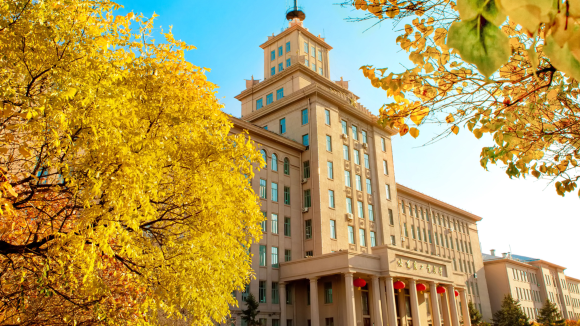
Best Universities For Engineering in World
These well-regarded universities have shown strength in producing research related to a variety of engineering topics. They include aerospace engineering, mechanical engineering, electrical engineering, and civil engineering. all rely on the basic engineering concept of using math and science to solve problems. These are the world’s top universities for engineering
1. Tsinghua University (China)

Tsinghua is a dynamic global university renowned for its high-quality teaching and research, and its spirit of social commitment. With an enduring dedication to excellence and innovation, Tsinghua is committed to inspiring future global leaders.
The bright and aspiring students are taught by top experts in their fields in world-class teaching and research facilities. The university is a hub for learning and discovery and helps pave the way for research and innovation in China and the world.
International collaboration and engagement are fundamental to the mission of the university. The diverse faculty and students come from across the nations and make key contributions to solving global challenges.
Tsinghua is consistently ranked among the very best universities in the world by the most respected international university rankings.
The university comprises numerous schools and departments, which offer programs across a variety of disciplines: science, engineering, literature, arts, history, philosophy, economics, management, law, education, and medicine. In all, there are more than 70-degree programs available to undergraduate students at Tsinghua University, as well as many more masters and doctoral programs.
The university has more than 300 research institutions. Among the university`s research labs are the Tsinghua National Laboratory for Information Science and Technology, the State Key Laboratory of Precision Measuring Technology and Instruments, and the National Engineering Laboratory for Digital Television. Students at Tsinghua have around 200 student groups that they can get involved in, such as the Zijing Volunteer Service and the Students` Performing Arts Club
2.Nanyang Technological University

Inaugurated on 1 July 1991, Nanyang Technological University (NTU) started out as a teaching university that has today transformed into a research-intensive global university.
Its predecessor institution, Nanyang Technological Institute (NTI), was set up in 1981 on the grounds of the former Nanyang University to educate practice-oriented engineers for the burgeoning Singapore economy.
Education:
Today, NTU is a research-intensive institution recognized globally for its impactful research, education, and innovation, with strengths in many areas shaping the 4th Industrial Revolution. The NTU Smart Campus is a living testbed for Singapore’s Smart Nation initiative and a model of sustainable living.
career:
Embracing administrative excellence, NTU also offers a unique professional career to its management and support members Nestled amid lush greenery in the west of Singapore, it takes you away from the hustle and bustle of the city. yet, it offers you all of the adrenaline-pumping challenges no different from the fast-paced corporate world. opportunities abound for your professional development and growth if you also embrace excellence and challenges
Research:
As a leading university, research is integral to NTU. It has a vibrant research culture and has created a name internationally for its work in fields such as advanced materials, biomedical engineering, clean energy and environment, computational biology, intelligent systems, nanotechnology and wireless, and broadband communication. The strong research culture has resulted in many world-first inventions. In order to continue to contribute and excel at the highest level, NTU through its Institute of Advanced Studies (IAS) has formed an advisory panel of several Nobel laureates.
3. Massachusetts Institute of Technology

Massachusetts Institute of Technology, founded in 1861, is located in Cambridge, Massachusetts, near Boston. Around 11,000 students attend the university, with roughly 60 percent of them studying at the graduate level. MIT contains five schools: architecture and planning; engineering; humanities, arts, and social sciences; management; and science. English is the language of instruction at MIT.
The academic calendar is a 4-1-4 system with a four-week "Independent Activities Period" in January. During this period, undergraduate and graduate students, faculty, staff, and alumni participate in forums, lecture series, recitals, and other special activities.
First-year undergraduate students are the only ones required to live on campus but many students further along in their studies choose to reside on campus as well. There are many opportunities for both undergraduate and graduate students to gain research experience at one of MIT’s many labs or centers, including the MIT Nuclear Reactor Laboratory, one of the largest university research reactors in the U.S. Nearly 90 percent of MIT undergraduates participate in the school’s Undergraduate Research Opportunities Program, which partners students and faculty for research projects, by the time they graduate. More than $675 million was spent on research at MIT in a recent year, with additional federal funding going to MIT’s Lincoln Laboratory, a Department of Defense research and development lab focused on technological solutions to national security issues.
4. Harbin Institute of Technology

Established in 1920, Harbin Institute of Technology is a non-profit public higher education institution located in the urban setting of the large metropolis of Harbin (population range of over 5,000,000 inhabitants), Heilongjiang.
This institution also has branch campuses in the following locations: Shenzhen, Weihai. Officially recognized by the Ministry of Industry and Information Technology of the People`s Republic of China, Harbin Institute of Technology (HIT) is a very large (uniRank enrollment range: over-45,000 students) coeducational Chinese higher education institution.
Harbin Institute of Technology (HIT) offers courses and programs leading to officially recognized higher education degrees such as pre-bachelor degrees (i.e. certificates, diplomas, associate or foundation), bachelor degrees, master degrees, doctorate degrees in several areas of study. See the uniRank degree levels and areas of study matrix below for further details.
This 100-year-old Chinese higher-education institution has a selective admission policy based on entrance examinations. The admission rate range is 40-50% making this Chinese higher education organization an averagely selective institution. International applicants are eligible to apply for enrollment.
HIT also provides several academic and non-academic facilities and services to students including a library, housing, sports facilities, financial aids and/or scholarships, study abroad and exchange programs, as well as administrative services.
5. University of California, Berkeley

The University of California—Berkeley is situated roughly 15 miles from San Francisco in what is known as the Bay Area. The public university, also commonly known as Berkeley or Cal, was founded in 1868. More than 70 percent of Berkeley students study at the undergraduate level.
The university is divided into 14 colleges and schools, including the highly ranked Haas School of Business, College of Chemistry, College of Engineering, School of Public Health, and School of Law. The academic calendar is semester-based and English is the language of instruction.
UC—Berkeley offers students around 350-degree programs. Some of the most popular majors for Berkeley undergraduates have included electrical engineering and computer science; economics; political science; business administration; and psychology.
Around a quarter of undergraduate students live on campus, including some 95 percent of freshmen. Many graduate students live off-campus, but they have the option to live in university-owned accommodations. Roughly 15 percent of the student body is international, and tuition and fees are higher for out-of-state students. Around 3,000 international scholars come to Berkeley each year in temporary teaching or research positions.
Berkeley research is conducted not just within academic department labs and research centers but also in some of the school’s museums and university-managed biological field stations. Research in botany, zoology, ecosystems, and forestry is undertaken at remote field station sites. Berkeley researchers discovered several of the elements on the periodic table, including californium and berkelium.
